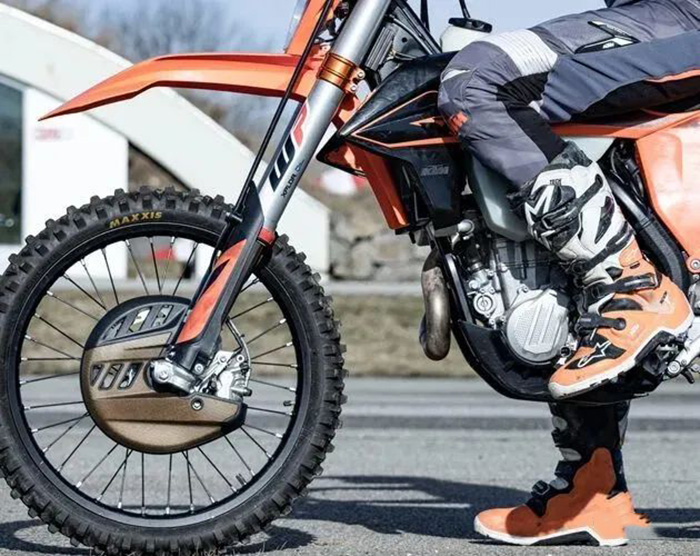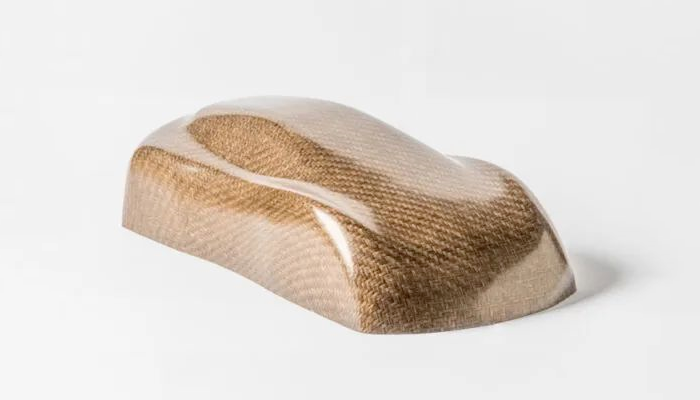Developed by Swiss sustainable lightweighting company Bcomp and partner Austrian KTM Technologies, the motocross brake cover combines the excellent properties of thermoset and thermoplastic polymers, and also reduces thermoset-related CO2 emissions by 82%.
The cover uses a pre-impregnated version of Bcomp’s technical fabric, ampliTexTM, which forms a lightweight and stiff structural base.
Once cured, the flax fiber composite part uses a CONEXUS coupling layer from KTM Technologies to bond stiffeners, fasteners and edge protection in the form of thermoplastic PA6. CONEXUS has an innovative chemical composition that provides a direct bond between the thermoset resin and the PA6 thermoplastic component of natural fiber composites.
A PA6 overmold that provides complete edge coverage for flax fiber components while preventing damage from impacts or flying debris—a common hit in trail racing—and provides an aesthetically pleasing surface finish. Compared to conventional injection-molded components, Bcomp and KTM Technologies’ brake covers reduce weight, increase stiffness, and reduce vibration, while significantly reducing the component’s overall CO2 footprint thanks to the carbon-neutral ampliTexTM. After the end of the product life, the coupling layer allows the parts to separate due to the lower melting temperature than thermoplastic materials.
Made entirely from flax, ampliTexTM is a versatile weave developed for sustainable composite production. By integrating ampliTexTM instead of common carbon and fiberglass layups, Bcomp and KTM Technologies reduced CO2 emissions from thermoset components by approximately 82%.
As sustainability and the circular economy become increasingly important forces in motorsport and transportation, projects like this brake cover are breaking new ground. As the development of fully bio-based epoxy resin and bio-based PA6 continues to advance, KTM Technologies plans to develop fully bio-based brake covers in the near future. At the end of the component’s useful life, with the help of CONEXUS foils, thermoset and thermoplastic components can be easily separated, PA6 can be recovered and reused, and natural fiber composites can generate electricity through thermal energy recovery.
Post time: Mar-31-2022









